There are a number of places to explore around Vilcabamba and I have by no means
explored them all. Much more to come in this section in the future.
The map below shows a few of the towns/cities that are close Vilcabamba: Malacatos,
Yangana, Zamora and of course the city of Loja
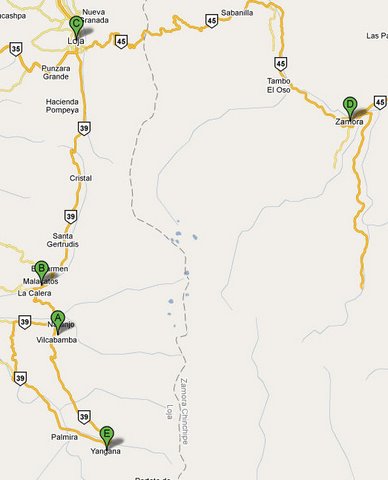
Below is the same map but live. You can zoom it, scroll it, enlarge it ...
View Larger Map
Loja is evidently the biggest place and the place that
locals go to for medical services, for shopping and for food and non-food supplies.
On the other hand, for the "Lojanos", Vilcabamba is their holiday spot. It is the
place that they come to on the weekends to get away from it all or for a holiday.
Consequently, Sundays can be very busy in Vilcabamba. The traffic explodes and I’ve
experienced Sundays where you cannot get a carpark in Vilcabamba.
Heading north ...
... the closest town (unknown to Google and therefore not on
the map above) is San Pedro.
This is a beautiful traditional Ecuadorian village, preserved and original in its
look and occupants. It has an inviting central square with a good looking church
built out of tapia (rammed earth). There are no obvious restaurants or cafes. San
Pedro is usually dead quiet unless there is some religious event and then the place
comes to life with processions, music and 100s of people. I was told that there
is a strong sense of community in San Pedro and one can really sense this when spending
some time blending with the locals.
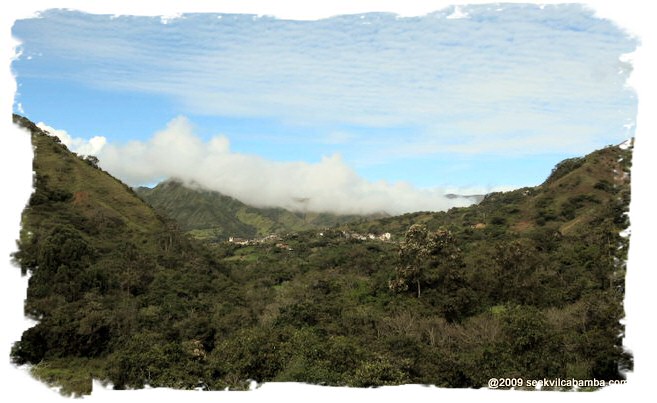 San Pedro de Vilcabamba
San Pedro de Vilcabamba
The next town heading north is Taxiche, then
Malacatos. Malacatos is between Vilcabamba and San Pedro
in size. There are a few expats calling Malacatos home, but for the most of it,
Malacatos is a traditional Ecuadorian town. Each of these towns is worth a visit,
if for nothing else than to absorb the local atmosphere.
Heading South ...
... are the towns of Quinara and Yangana
These 2 towns are pretty much at the same distance from Vilcabamba. They look quite
different. Quinara is flat and along a river while
Yangana is hilly. Quinara has an impressive suspended bridge that appears so out of place considering
the small size of the ton itself.
 Quinara
Quinara
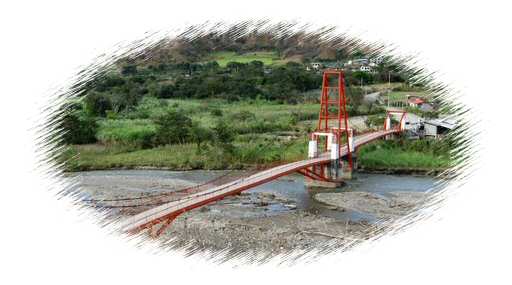
As far as the villages themselves are concerned, I personally found Yangana
prettier than Quinara.
 Yangana
Yangana
Along the road to Yangana are these stunning earth columns
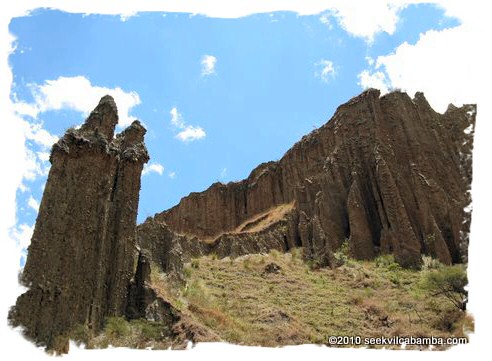 On the road to Yangana
On the road to Yangana
These can be found in Vilcabamba itself as well, in Yamburara alto more precisely.
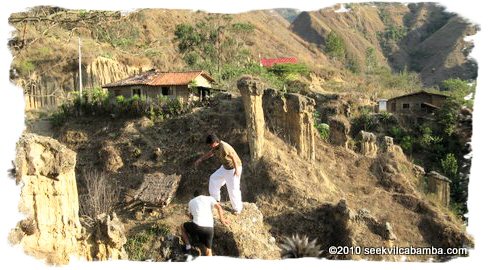
Teenage boys love climbing on these to impress the girls watching.
We also have a few on our property of Uchima in Sacapo. It is a mystery to me how these tall structures made
of just earth defy time, wind and rain erosion.
Malacatos

Malacatos is a small town located in the next valley from Vilcabamba on the way
north to Loja (6 kms approximately). The valley is very different, much wider, much
more opened and people say slightly warmer. Malacatos has more food than Vilcabamba.
We had a good laugh the other day with some local people when we concluded that
while Malacatos grows food, Vilcabamba grows gringos. Indeed, all the expats seem
to want to live in Vilcabamba. Very few have settled in Malacatos and the population
of Malacatos is predominately Ecuadorian.
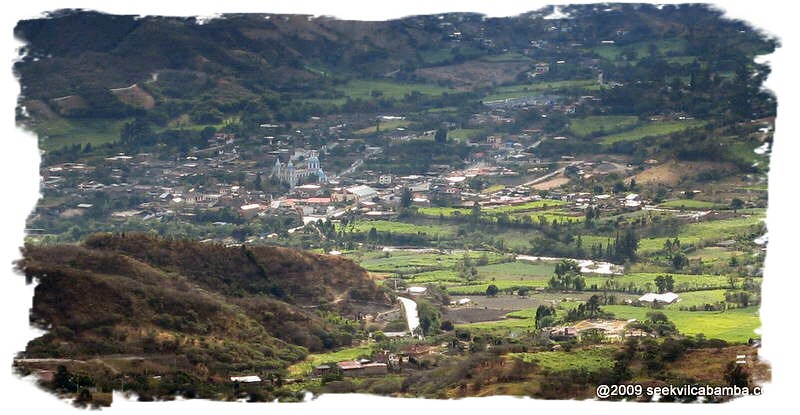
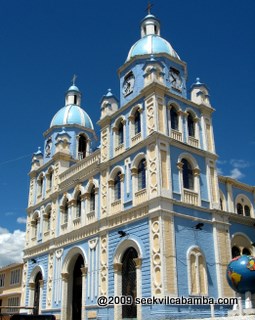
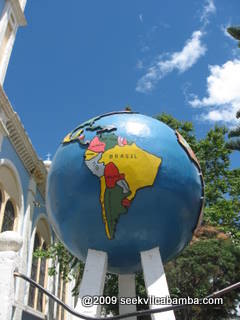
The town is a beautiful town with a lovely bright blue church. The town has a large
outdoor food market every Sunday where local grown produce is sold.
Agropecuario “El Campo”
Dr Rosa Georgina Paredes Ochoa Veterinaria Zootecnista. I have taken my bitch to
see Rosa when she was sick after just having her puppies. This vet is a large open
shop with an examination table in one part of the shop. Her diagnosis was correct
and her service very good. However, I did not see any operation facilities.
Address: Av. Pio Jaramill Alvarado y Justiniano Estupinan (Frente
al Coliseo, Malacatos.
Mobile: 091819412
Loja
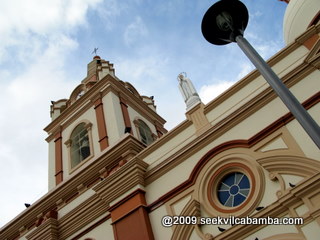
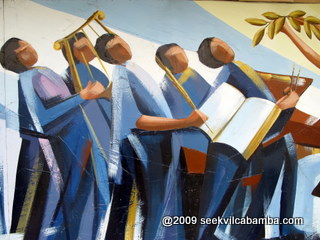
Loja is a city and it is obvious that classifying Loja under Vilcabamba's "neighbouring
towns" is to be taken with a smile. In the context of this "Vilcacentric" web site,
this is where we want Loja to be, at least for now.
Someone once told me when I first got here in Ecuador that all the junk, surplus
stock, left over stuff from America ends up in Ecuador. I am kind of inclined to
agree with this.
Loja is like a big flea market: locally made goods are great, anything that is not
locally made is …….. I’ve seen OLD manual typewriters for sale, something that you
stopped being able to buy in New Zealand probably 20 years ago. I’ve seen
CD walkmans for sale, again something that you can no longer buy in New Zealand.
Is this good or bad? I think it is good that Ecuador is behind the rest of the world,
otherwise we wouldn’t be coming here to live as it would be as controlled as our
home lands. It also helps you break the shopping addiction (if you have one) as
you just don’t want to shop here unless it is for local products or unless you absolutely
need something!
Having said that, I need to add that Loja is a place that one discovers little by
little, not at once. I have a great time when I go to Loja because I like to stick
my nose into new places and talk to strangers although my mother always told me
not to :-) There are some real jewels in Loja but it takes time and determination
to find them. For example, it is only 6 months after we emigrated to Vilcabamba
that I discovered a state of the art ceramic factory where you can buy incredible
diner sets and other things at incredibly low prices..
Read on...
Zamora

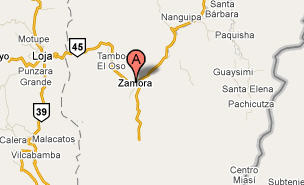
About 2 hour drive from Loja to the east in the Amazon forest lies a small and tranquil
town called Zamora. Getting there from Vilcabamba in our old Land Cruiser was quite
a trip, not because it is far in kilometers but because the road is so bad and so
twisty. You have to climb for half an hour from Loja and then go all the way down
again. At the time of this writing (July 2010) they are rebuilding the road with
concrete just like the road to Cuenca but it will take some time before it is finished.
In the mean time, watch the potholes. The last few kilometers are particularly hard
because they only allow the traffic one way at a time over a long distance and we
had have to wait half an hour each way. This is all part of the Ecuadorian experience
:-)
Parts of the road a really scenic. We particularly enjoyed the big cascade located
on the right side of the road approximately an hour drive from Loja.
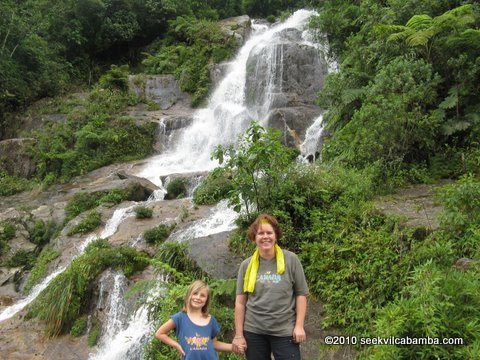
Read on...
Quinara
A day in Quinara
by Anita Evans
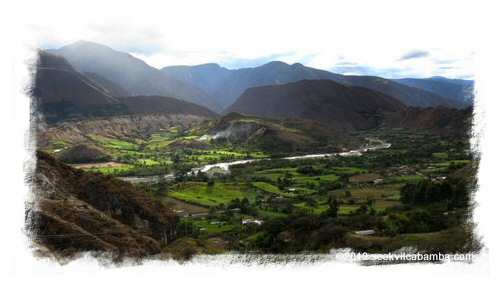
Head south from Vilcabamba along the main road; you will travel along mountain roads.
At one point you look up this mountain face and you feel like an ant. You come to
a faded sign on your right that says ‘entrada Quinara’ turn right here!
You will now be on unsealed road. Thought you would have gone through some segments
of unsealed road on the main road you have just turned off. However, from now on
in it is totally unsealed.
Follow this one lane road till you come across a very very nice new red and grey
painted metal bridge (on your left). It’s totally out of place given it’s in the
middle of nowhere. At the bridge the road in front of you forks. Take the right
fork. At the time of writing this the left fork was ‘no pasa’.
Again, follow the one lane dirt road and you will eventually come out on top of
a very lush green river belt with little villages and casa’s dotted along the rivers
shores. Follow the road down the hill (well there is nowhere else for you to go,
really) and you will arrive at the village of Quinara. The people are very friendly
here. The town itself does not flow as well as Vilcabamba in fact it’s completely
different to Vilcabamba. It’s smaller and obviously not a tourist attraction that
Vilcabamba has come to be.
You could go down the river and stop for a while and enjoy your picnic. Or ask the
locals for La Palmira. They will tell you to go across the suspended bridge and
follow the road. This is another impressive bridge given the look of the area around
you. It’s a long, red metal bridge in very good condition (at the time of writing).
If you decide to go across the suspended bridge to La Palmira you will enjoy a nice
drive through some very typical villages of Ecuador. The road is bordered by a very
nice tapia wall on the left which is adorned with bougainvilla plants. It separates
the cane fields from the road and I suspect keeps the dust off the cane and the
people out. Cane is the main crop in this area. If you go along far enough, crossing
the river you’ll come to some cliff faces that are made up of pink and red rock.
It is just after this point that we turned around and headed back.
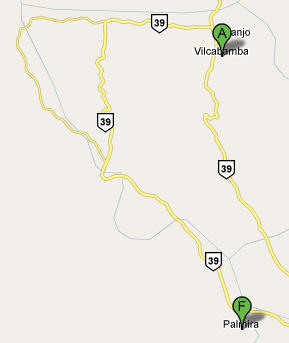
From Quinara you can take a different road back to Vilcabamba. The instructions
I were given was when you come in to Quinara from your trip from the main road turn
right on the main road in Quinara and that road will end up by Hosteria Vilcabamba.
Or just ask a local to point you in the direction of Vilcabamba.
Be fair warned……….. this is a dirt road, one lane in most parts. Quite often there
is no one to be seen (we didn’t pass a single car until we got just outside of Vilcabamba).
There is no gas station. It’s a LONG drive back along this road.
The trip is very scenic. The road follows a river and goes through some small settlements.
Just follow the road…. You will come to one settlement that has a very small town
square surrounded by some half kept hedges take the left fork in the road here.
Or ask a local for the good road to Vilcabamba. DON”T take the road that goes past
the basketball concrete (will be on your left as you leave the village if you are
on this road) area as this is the bad road to Vilcabamba.
Now keep following and following the road. You may experience moments where you
wonder where the hell you are as you watch your gas tank needle go down and dusk
set in. At a point in time you will come across a very fancy house with stables
and white fences. You’ll know it as it stands out from anything else you will have
passed along the way. The road turns right at this point. You are now on the road
that will take you to Hosteria Vilcabamba. The river is still on your left but following
a different way now. As you follow this road the settlements will become denser
and the road will turn to a sealed road. At the very end you will find yourself
at the main road into Vilcabamba with Hosteria Vilcabamba on your right.
This is a long drive 1 hour to 1 ½ hours plus.
It is a nice day trip and allows you to see rural Ecuador and some nice scenery.
You will see Vilcabamba with new eyes.
Zaruma
A day in Zaruma (via El Cisne) - El Oro province Ecuador
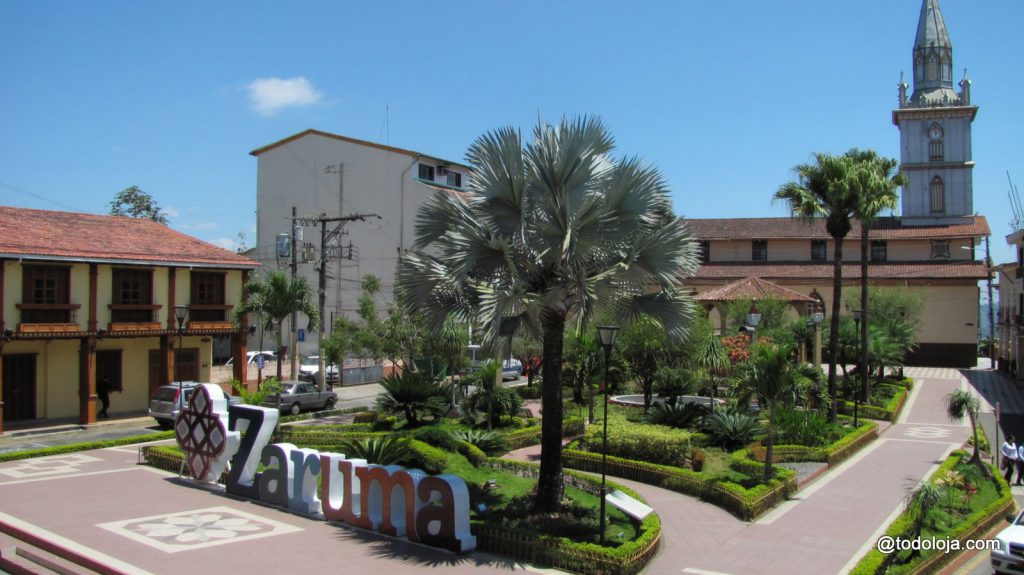
Recently I had the opportunity to hop into an Ecuadorian friend of mine’s car and let myself take on a tour, destination Zaruma in the El Oro province. For those who don’t know, the El Oro province is just next to the Loja province and is one part mountain (sierra) and one part coast. Machala is part of this province and is on the coast whereas Zaruma is in the mountains.
Wandering around downtown Zaruma is fantastic. The buildings, the clocks, the museums, the churches, the streets, the shops, the restaurants, the hotels everything is pretty. One could almost feel as being in Switzerland.
It is extremely easy to go to Zaruma from Loja. Everybody knows how to get to Catamayo which because it is where the airport is located. From Catamayo one needs to drive to San Pedro de la Bendita, then to El Cisne and finally to Portovelo/Zaruma.
Read on...